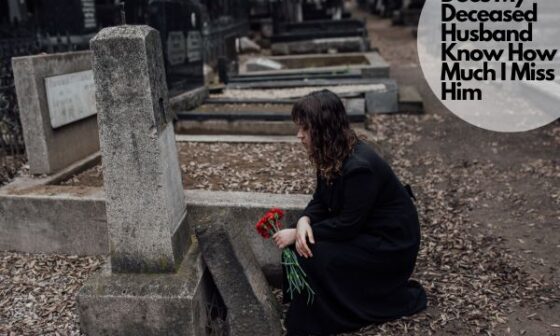Family therapy and individual therapy are valuable resources for addressing emotional and psychological challenges. They provide a safe space for individuals and families to explore their thoughts, feelings, and behaviors while working towards personal and relational growth.
Many people often wonder whether family therapy incurs higher costs compared to individual therapy. In this article, we will delve into the intricacies of therapy costs, and the factors that influence them, and help you make an informed decision based on your unique needs.
Does Family Therapy Cost More Than Individual Therapy
The cost of family therapy and individual therapy can vary depending on several factors, including the therapist’s credentials, location, session duration, and the specific issues being addressed. In some cases, family therapy might cost more than individual therapy, while in other cases, it might be comparable or even less expensive. Here are a few considerations:
1. Session Duration
Family therapy sessions often involve multiple individuals and can run longer than individual therapy sessions. Longer sessions may lead to higher costs.
2. Therapist’s Expertise
Therapists with specialized training in family therapy might charge higher fees for their expertise.
3. Number of Participants
Family therapy involves multiple participants, which could potentially lead to higher fees compared to individual therapy.
4. Complexity of Issues
The complexity of family dynamics and issues being addressed can influence the cost. More intricate or deeply rooted issues might require more time and expertise.
5. Location
Therapy costs can vary significantly based on the region or city you live in. Urban areas generally have higher costs of living, which can translate to higher therapy fees.
6. Insurance Coverage
Some insurance plans cover therapy, but coverage can vary. Check with your insurance provider to understand what types of therapy are covered and what your out-of-pocket costs might be.
7. Sliding Scale Fees
Some therapists offer sliding scale fees based on your income or financial situation, making therapy more affordable.
8. Group Therapy vs. Individual Therapy
Group therapy (which might include family therapy) can sometimes be more cost-effective than individual therapy, as the cost is divided among multiple participants.
It’s essential to discuss fees with potential therapists before starting therapy to understand their pricing structure and any potential additional costs. Keep in mind that therapy is an investment in your well-being, relationships, and personal growth. If you’re concerned about costs, consider factors such as the therapist’s experience, expertise, and the potential long-term benefits of therapy in making your decision.
Understanding Family Therapy and Individual Therapy
Family therapy and individual therapy represent distinct yet interconnected branches of psychological support. Family therapy revolves around addressing the dynamics within a familial unit, focusing on relationships, communication, and patterns of interaction. On the other hand, individual therapy, as the name suggests, is centered on the personal struggles, emotions, and growth of an individual.
The goals of family therapy often encompass fostering healthier family relationships, enhancing communication, and resolving conflicts collectively. Conversely, individual therapy primarily concentrates on aiding individuals in overcoming personal challenges, managing stress, and developing coping mechanisms.
Factors Influencing Therapy Costs
Therapy costs can vary significantly based on several factors that influence the duration, frequency, and overall experience of sessions. Session duration and frequency play a pivotal role in determining the cost structure. Longer sessions or more frequent visits might lead to higher expenses. Additionally, the qualifications, experience, and reputation of the therapist can influence the cost, as more seasoned professionals may charge higher fees.
The location and type of therapy setting also contribute to cost disparities. Urban areas or specialized clinics might have higher fees compared to rural settings or community-based centers. The level of individualization and specialization in the therapy process can also impact costs.
Cost Comparison: Family Therapy vs. Individual Therapy
When comparing the costs of family therapy and individual therapy, it’s important to note that there is no one-size-fits-all answer. Family therapy sessions typically involve multiple participants, such as couples or entire families, which can affect pricing. On average, family therapy sessions may be more expensive due to the involvement of multiple individuals and the complexity of addressing interrelationships.
Individual therapy, in contrast, generally involves one-on-one sessions, which might have a comparatively lower price point. The tailored focus on individual concerns often makes individual therapy a more cost-effective option for those seeking targeted support.
Insurance Coverage and Financial Considerations
Insurance coverage plays a crucial role in making therapy accessible to a broader range of individuals. Many insurance plans provide coverage for both family therapy and individual therapy, but the extent of coverage can vary. It’s essential to review insurance policies to understand what types of therapy are covered and the associated costs.
Considering financial considerations, out-of-pocket expenses for family therapy could be higher due to the involvement of multiple participants. However, individual therapy might require more extended engagement, potentially leading to higher cumulative costs over time.
Effectiveness and Outcomes
The effectiveness of both family therapy and individual therapy hinges on the specific goals of treatment. Family therapy aims to improve family dynamics, communication, and problem-solving abilities. This approach can yield long-term benefits by addressing underlying issues within the family system.
Individual therapy, on the other hand, concentrates on personal growth, self-awareness, and managing individual challenges. This approach can lead to enhanced self-esteem, improved coping mechanisms, and a better understanding of one’s emotions.
Tailoring Therapy to Specific Needs
The decision between family therapy and individual therapy often depends on the unique needs and circumstances of the individual or family seeking treatment. Family therapy is ideal when addressing issues that involve multiple family members, such as marital conflicts or parent-child relationships. Individual therapy is more suitable for personal struggles like anxiety, depression, or self-esteem concerns.
By tailoring therapy to specific needs, individuals and families can maximize the benefits of the chosen approach, optimizing the value of their investment in therapy.
Choosing Between Family and Individual Therapy
Choosing between family therapy and individual therapy necessitates careful consideration of various factors. Collaborative approaches, such as conjoint therapy, can integrate elements of both family and individual therapy to address complex issues. It’s essential to consult with therapists to explore which approach aligns best with your goals and circumstances.
1. Accessibility and Availability
The availability of family therapy and individual therapy services has expanded in recent years, thanks to technological advancements. Remote and online therapy options provide greater accessibility, allowing individuals and families to receive therapy from the comfort of their homes. This flexibility can also impact cost, as remote sessions might have varying pricing structures.
2. Addressing Misconceptions About Costs
Misconceptions surrounding therapy costs can hinder individuals and families from seeking the help they need. It’s important to dispel myths and clarify that the value gained from therapy often far outweighs the associated expenses. By emphasizing the potential long-term benefits and improved quality of life, individuals can make informed decisions about investing in their mental health.
Cost of Family Therapy
Family therapy costs can vary depending on the number of family members involved and the therapist’s pricing structure. On average, a family therapy session can range from $100 to $250 or more per hour. Group dynamics play a significant role in family therapy, as therapists navigate the interactions and communication patterns among family members. While the initial costs may seem higher due to involving multiple individuals, the long-term benefits of improved family dynamics and communication can make it a worthwhile investment.
Cost of Individual Therapy
Individual therapy typically involves one-on-one sessions between the client and therapist. The cost per session can vary, ranging from $75 to $200 or more per hour, depending on factors such as the therapist’s experience and location. Individual therapy allows for focused attention on personal concerns and provides a confidential space for self-exploration. While the costs may be lower per session compared to family therapy, the intensity of individual work on personal issues should be considered.
Comparing Costs: Family vs. Individual Therapy
When comparing the costs of family therapy and individual therapy, it’s essential to consider the value and benefits each approach offers. Family therapy provides an opportunity to address systemic issues within the family unit, potentially reducing conflicts and improving overall family well-being. Individual therapy, on the other hand, focuses on individual growth and addressing personal challenges.
The cost-effectiveness of each therapy approach depends on the specific goals and needs of the individual or family. While family therapy may initially have higher session costs due to involving multiple participants, its potential to create lasting positive changes in family dynamics and relationships can lead to significant long-term benefits.
Insurance Coverage and Financial Assistance
Many individuals and families may have concerns about the affordability of therapy. It’s important to note that some insurance plans cover a portion of therapy costs. However, coverage can vary widely based on the insurance provider and the type of therapy.
Additionally, some therapists offer sliding scale fees, which adjust the cost based on the client’s ability to pay. This can make therapy more accessible for individuals with financial constraints. Certain nonprofit organizations and government programs also provide financial assistance or low-cost therapy options.
Making an Informed Decision
When deciding between family therapy and individual therapy, it’s crucial to assess your specific needs and goals. Consider the dynamics within your family, the nature of the challenges you’re facing, and your personal preferences. Consulting with therapists and discussing your concerns can help you make an informed choice that aligns with your well-being and financial considerations.
The Emotional Investment
As you weigh the financial aspects of therapy, remember that the emotional well-being and growth of individuals and families are invaluable. Investing in therapy is an investment in better communication, healthier relationships, and personal development. The positive changes that can result from therapy can extend far beyond monetary costs.
Conclusion
In the realm of mental health and personal growth, both family therapy and individual therapy offer transformative possibilities. While the costs of these therapeutic approaches may vary, the potential benefits for enhancing relationships, managing challenges, and fostering well-being are immeasurable. By understanding the factors that influence therapy costs and carefully evaluating your own needs, you can make a choice that aligns with your goals and priorities.
FAQs about Family Therapy Costs vs. Individual Therapy Costs
1. Is family therapy more expensive than individual therapy? The costs can vary based on factors such as session duration, number of participants, and therapist rates. It’s important to consider the long-term benefits and value.
2. Does insurance cover family therapy and individual therapy? Insurance coverage varies. Some plans cover both types of therapy, while others may cover one more extensively. It’s recommended to check with your insurance provider.
3. Are there affordable options for therapy? Yes, some therapists offer sliding scale fees based on your financial situation. Nonprofit organizations and government programs also provide financial assistance.
4. Which therapy approach is more effective for addressing family issues? Both family therapy and individual therapy have their merits. Family therapy focuses on systemic dynamics, while individual therapy centers around personal growth.
5. How do I choose between family therapy and individual therapy? Assess your family’s needs and goals. Consult with therapists to discuss your concerns and preferences before making a decision.







